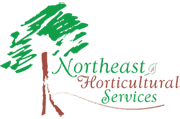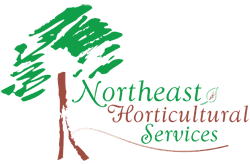Many of you have noticed something funny going on with your American Beech trees. As if the poor Beech tree didn’t already have enough going on with bleeding canker and beech bark disease, now there is a nasty little nematode wreaking havoc with our beech trees. I recently sat with Mathew Borden PhD, plant pathologist who is researching ways to stem its spread. Let’s get you some facts on what’s going on.
Where did it come from?
Beech leaf disease is caused by an asian nematode Litylenchus crenatae subspecies mccannii. It was first observed in Lake County, OH, in 2012. By 2019 it had spread to thirteen different Ohio Counties and 5 states, working its way eastward. It can be found in Ontario, Canada, Ohio, Massachusetts, New York, Pennsylvania, Maine and now, CT. 2019 it was found near the Mianus river between Greenwich and Stamford. It can be found in every county in CT with the exception of Hartford county. The disease is so prevalent in our state that when found, it no longer needs to be reported to the Connecticut Agricultural Experiment Station. Unfortunately, no one knows yet how this disease is spread.
What trees does it affect?
While mainly observed on American beech, BLD has also been confirmed on European, Oriental, and Chinese beech (F. sylvatica, F. orientalis, and F. engleriana).
What does BLD look like?
The symptoms are best seen on the foliage, when looking up into the canopy from under the tree. It appears as dark bands between the leaf veins. However, this year the symptoms are severe, and include stunted leaf development, curling, yellowing and browning of leaves, tips of branches and entire branches dying and pre-mature leaf drop. As we have been walking on properties assessing beech trees in the last few weeks, it appears as if fall has already come for beech trees.
There are a few other diseases of beech trees that have similar symptoms. Woolly beech aphid, erineum gall and beech anthracnose can all have similar symptoms. It is important to have your arborist check your trees and verify the diagnosis is correct.
What are the effects of BLD?
American beech provide food and habitat to over 40 species of birds and mammals in eastern forests, making it an ecologically important species of tree. BLD primarily attacks young trees and saplings and can cause death of smaller trees in 2-5 years. In areas where beech leaf disease is well distributed it has caused death in 90% of young saplings. It is definitely also causing mortality in larger, older specimens of beech at this point. Mortality in larger trees occurs in 6-10 years after infection. The severity in trees can vary, but in advanced stages, BLD can result in premature leaf drop, branch and tip dieback, aborted buds and thin canopies. It also increases susceptibility to other pests and diseases due to the high stress level created in the tree.
What can you do to save your beech trees?
There is no cure for beech leaf disease at this time. Several companies have been running trials with different treatment protocols. None of them have proven to be a clear-cut solution to this problem. There will be some trial treatments that will hopefully show us results in spring 2023. In the meantime, the best thing we can do for our beech trees is treat them for the other ailments that can infect them in their weakened state. Some studies have found that beech trees treated with a phosphite based fungicide have performed much better when under attack from BLD, but this is not a cure. It is also advisable to provide nourishment and root boosting components to trees infected with BLD. Our arborists can provide these options to you.
How can you help prevent the spread of BLD?
To slow the spread of the disease, remember these tactics in addition to talking to your local arborist for some recommendations and next steps:
Avoid moving beech tree branches, twigs, leaves and seedlings from affected areas. Do not take brush or clippings from beech trees off your property.
Closely inspect any beech nursery stock for symptoms of beech leaf disease before purchase and planting. It is best to hire an arborist to select nursery stock and plant trees so that you can make sure your trees come in disease free.
Avoid moving soil or other organic matter from affected areas.



